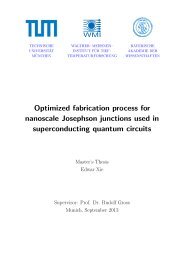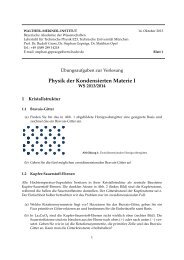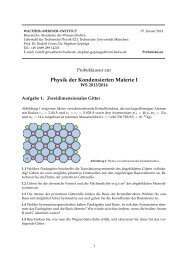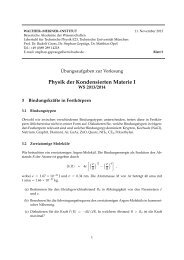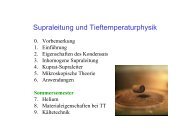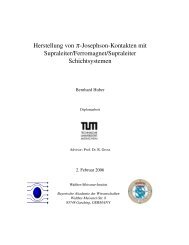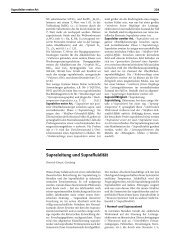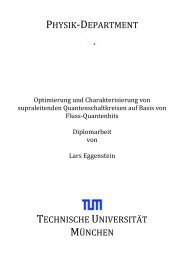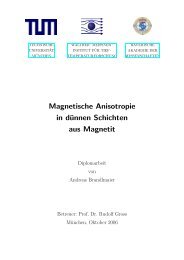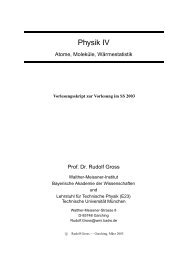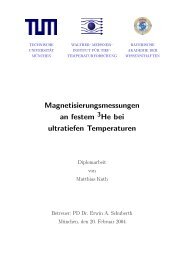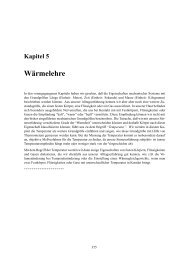Surface magneto-plasmons in magnetic multilayers - Walther ...
Surface magneto-plasmons in magnetic multilayers - Walther ...
Surface magneto-plasmons in magnetic multilayers - Walther ...
Create successful ePaper yourself
Turn your PDF publications into a flip-book with our unique Google optimized e-Paper software.
Section 2.3<br />
Reflectivity of surface <strong>plasmons</strong> 13<br />
is equated with Eq. (2.22) what yields<br />
θSPP = arcs<strong>in</strong><br />
<br />
1<br />
ε ′(0)<br />
<br />
ε (1) ε ′(2)<br />
ε (1) . (2.25)<br />
+ ε ′(2)<br />
The imag<strong>in</strong>ary part of the dielectric function ε ′′(1) describes the damp<strong>in</strong>g of light when<br />
travell<strong>in</strong>g through the metal. It depends on the thickness of the metal layer and it<br />
is called radiation damp<strong>in</strong>g [34]. The radiation damp<strong>in</strong>g decrease exponentially with<br />
the film thickness and therefore when assum<strong>in</strong>g a th<strong>in</strong> film ε ′′(1) can be neglected.<br />
With this assumption for a gold layer the resonance occurs at θSPP = 43.6 ◦ .<br />
S<strong>in</strong>ce at resonance, surface <strong>plasmons</strong> are excited, there must be an attenuation of the<br />
<strong>in</strong>tensity of the totally reflected light <strong>in</strong> the prism. That is why the prism coupler is<br />
also known as Attenuated Total Reflection coupler or short ATR coupler.<br />
2.3 Reflectivity of surface <strong>plasmons</strong><br />
As mentioned <strong>in</strong> Sect. 2.2.1, the excitation of surface <strong>plasmons</strong> leads to a reduction<br />
of the <strong>in</strong>tensity of the reflected light. To calculate the angle dependency of the re-<br />
flectivity of surface <strong>plasmons</strong> excited by an ATR device only the Fresnel equations<br />
for p-polarised light with the wave vectors kx (Eq. (2.22)) and k (i)<br />
z (Eq. (2.14)) are<br />
needed [35].<br />
Here, r p<br />
ij<br />
r p<br />
ij<br />
k(i) z /ε<br />
= (i) − k (j)<br />
z /ε (j)<br />
k (i)<br />
z /ε (i) + k (j)<br />
z /ε (j)<br />
and t p<br />
ij = 1 + rp ij . (2.26)<br />
is the reflection coefficient at an <strong>in</strong>terface between media i and j, tp<br />
ij<br />
is the<br />
transmission coefficient through medium j. The <strong>in</strong>dex i <strong>in</strong> tij says that the light<br />
comes from medium i. For the sake of completeness the reflection and transmission<br />
coefficients for s-polarised waves are<br />
r s ij = k(i) z − k (j)<br />
z<br />
k (i)<br />
z + k (j)<br />
z<br />
and t s ij = 2k(i) z<br />
k (i)<br />
z + k (j) . (2.27)<br />
z



